Specs
- Description: A hand machined metal mechanical pencil with a variety of grip style options
- Lead size options: 0.5mm, 0.7mm and 0.9mm
- Measurements: 144mm long and 8mm wide (flats).
- Grip Styles: Plain in low or high taper, Grooved in low or high taper, Knurled Interrupted and Knurled Continuous.
- Metal Options: Stainless steel, aluminium or brass
- Weight: 25g (Stainless versions)
- Packaging: A robust plastic tube with a printed label denoting the grip style
- Price: £65 to £90GBP for the Kickstarter pre-order

Intro / About
When the Number 9 Mechanical Pencil blipped on to my radar, I was certainly intrigued. As a self-confessed machined pen addict, I knew that high-end clutch pencils from small batch machinists are pretty damn rare. So rare, in fact, that I don’t think I knew of any before I started this review.
Enter the Number 9 — a hand machined mechanical pencil with a hexagonal metal body and ‘Sharp-style’ internal mechanism. This is the creation of Lindsay Wilson, a Scottish engineer and inventor based in Edinburgh.
Having hand made a number of bespoke pens, pencils and custom parts for writing instruments on his lathe, he decided to make his own mechanical pencil (or ‘pencils’, depending how you look at it) and offer them up to anyone else willing to back his Kickstarter. Launched on October 30th, the Number 9 Kickstarter has already passed its initial funding goal. Let’s take a look a closer look at the Number 9 and some of the options available.
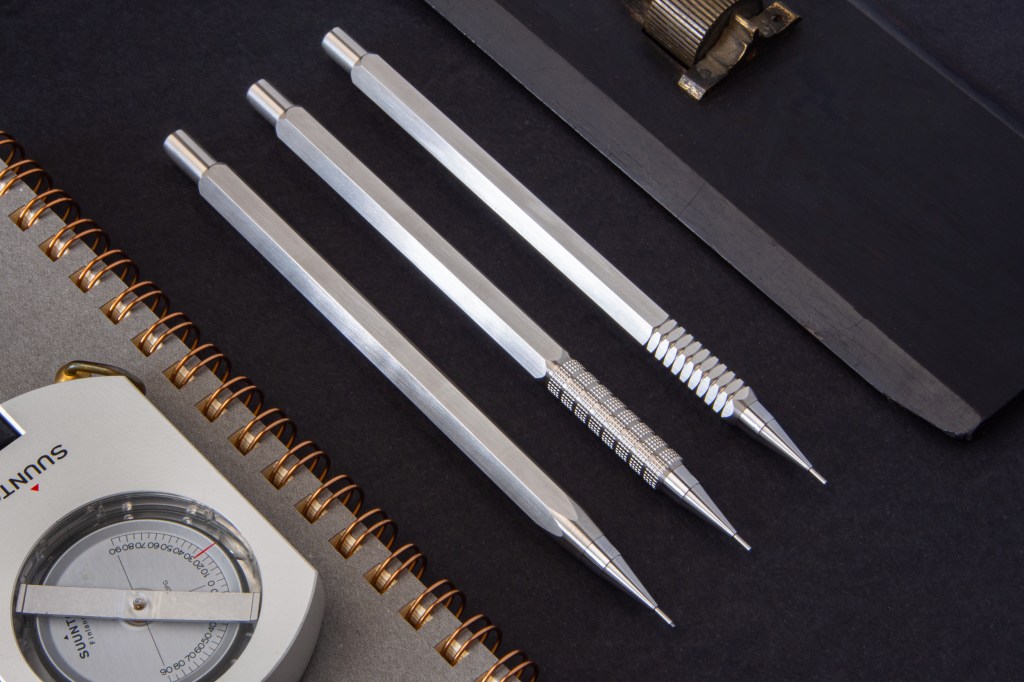
Form & Finish
The Number 9 reviewed here are made from stainless steel (brass and aluminium are also available) with a Pentel 200 internal mechanism. There’s not much to say on the trusty 200 – only that its good innings are testament to its popularity among drafters, engineers, architects and the like. It’s a rock solid ‘clutch’ mechanism that’s both sturdy and reliable, with a capped eraser that’s also included in the Number 9.

But it’s the metal body, machined from bar stock, which sets the Number 9 apart from your off-the-shelf mechanical pencil. Six hand brushed satin faces make up the hexagonal body, each divided by a crisp edge – there’s no rounding like you usually find on production pencils.
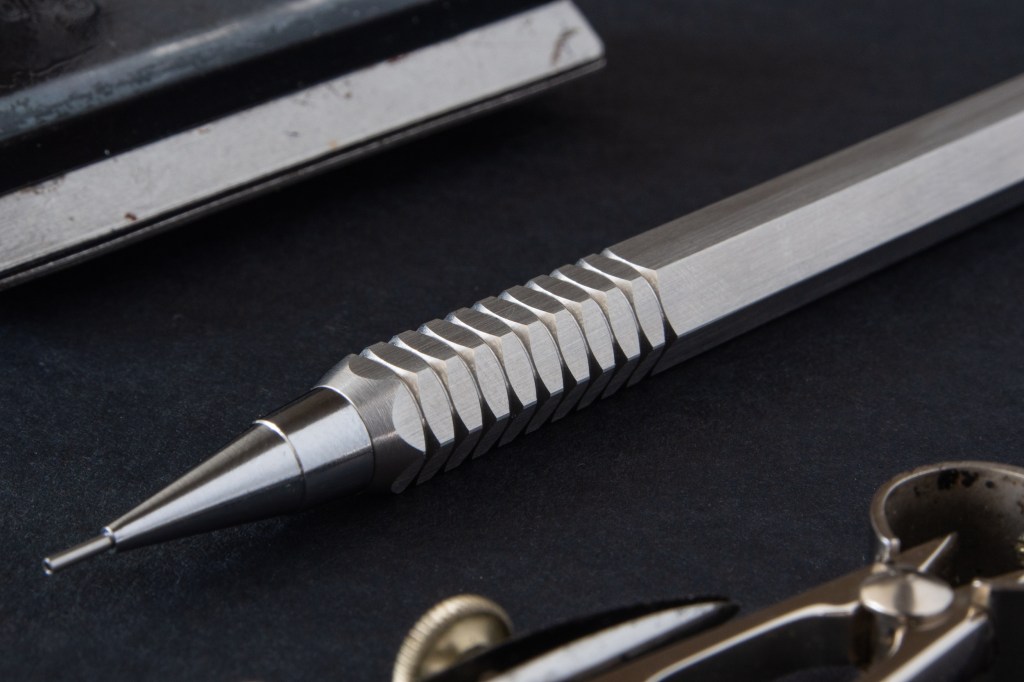
The Number 9 is offered in a host of grip styles, and the three reviewed here are examples of the main styles available; Plain, Grooved and Knurled. Plain continues the hexagonal body right down to the cone of the mechanism whilst Grooved adds a series of 10 channels cut into the body. Both of these grip styles have the option of a high taper, shown on the Grooved version (above), or a low taper like on the Plain pencil (below).

The knurled grip option is offered in two versions: ‘Continuous’ or ‘Interrupted’ (review sample). The interesting thing about the knurling on these is just how perfect it is. It turns out Lindsay doesn’t use a traditional knurling machine that squashes the metal into shape. Instead each ‘knurl’ is cut out of the barrel with a series of crisscrossing channels – check out the video on the Kickstarter to see what I mean.

The Number 9 breaks down by unscrewing the cone at the front end which frees the mechanism to slide out the back of the body. This means that there’s no need to get hung up on your lead choice as you can always switch the mechanism with a stock Pentel 200 later. Refilling is done via the eraser as with most clutch pencils.
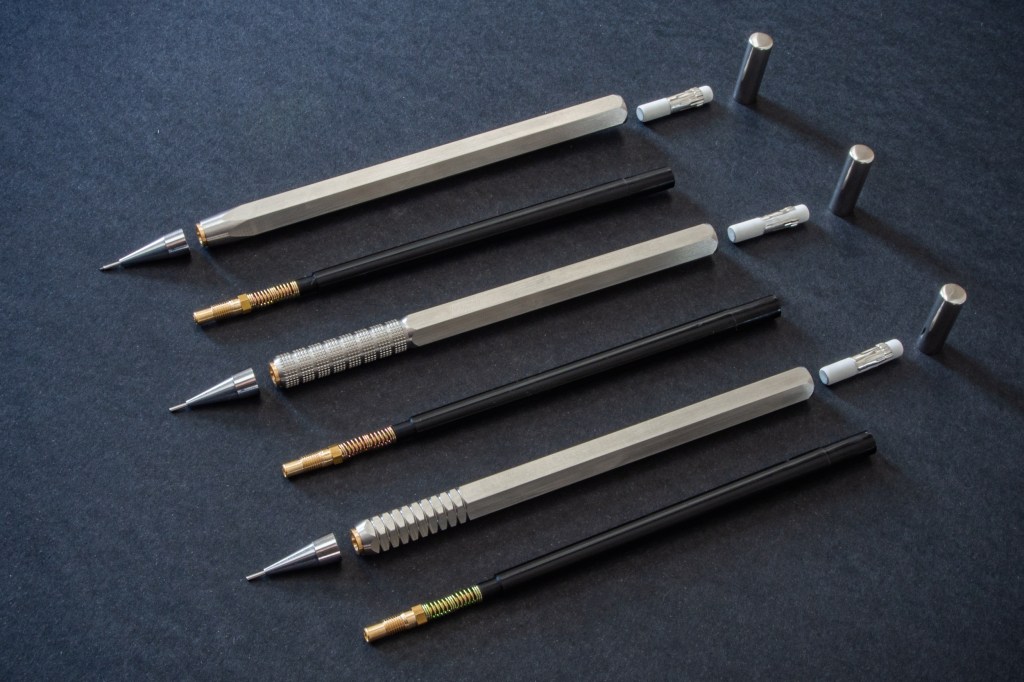
Lindsay offers the Number 9 with or without a pocket clip. Clipped versions feature the original Pentel 200 pocket clip which is held in place by a groove on the barrel. In my view, the Pentel clip just looks a bit cheap on these but since I wouldn’t pocket carry a mechanical pencil anyway, this didn’t bother me.
Feel
The Number 9 feels great in the hand. Spin it in your fingers and you can feel each of those six crisp edges and smooth faces. The standard of machining is flawless and each has tactile and quality feel you’d expect from a writing instrument of this price (and higher). The steel versions reviewed are surprisingly light, even lighter than off-the-shelf metal pencils such as the Rotring 600.
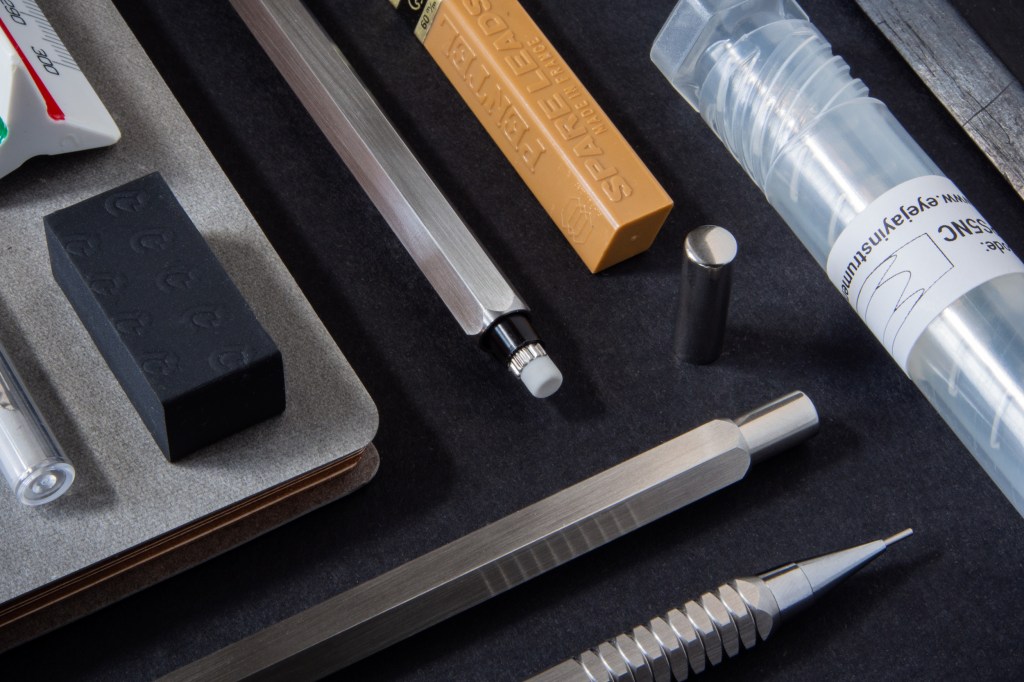
When I first saw the range of Number 9 options, I wondered which I’d prefer. But after having the privilege of comparing each side-by-side, I can honestly say all are very comfortable to hold and use for extended sketching / writing stints. Your own mileage may vary but I’ll run through how each style felt in my large(ish) hands.

Knurled Interrupted feels very similar to your typical mechanical pencil, and the knurling is very grippy without feeling harsh. The 7.7mm diameter of the grip left me feeling a fair amount of my own fingers when writing, so this grp style may be better suited to small to medium sized hands.

The Grooved High Taper option was a great fit for my fingers, providing good grip and allowing me to hold the pencil closer to the lead, which I tend to do when drawing little details or margin notes.
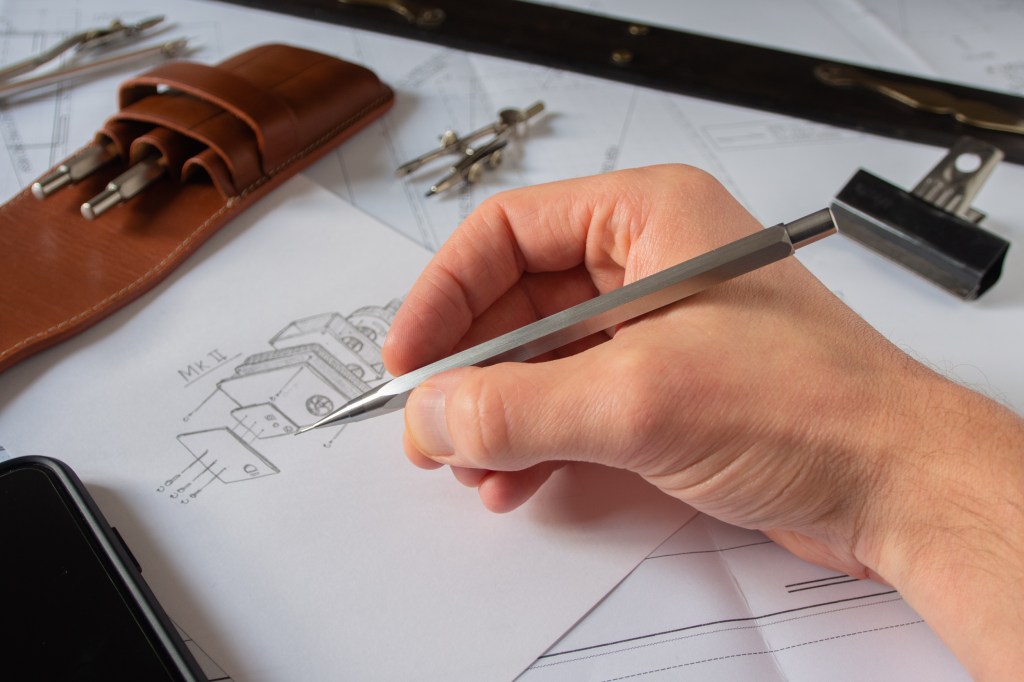
Plain low taper was interesting. Once I found the sweet spot, just above the taper, I forgot about grip entirely. However, I did notice the cone would very occasionally unscrew a little during use – probably because of my tendency to grip the pencil closer to the point.
For me, the deciding factor for comfort was actually the high or low taper rather than the grip style. If you tend to hold your pencil further back, low taper should suit you fine. If you want to be able to grip wherever or like me tend to grip closer to the lead, the high taper is probably your best bet.

Pros:
- Flawless machining on each style makes for a beautiful looking writing instrument
- Feels great in the hand and comfortable to use across each grip style
- Plenty of meaningful options to choose from
Cons:
- On my Plain Low Taper sample, the front cone occasionally loosened during extended use
- The optional stock Pentel pocket clip feels out of sync with rest of the pencil
Conclusion
I’m going to try hard not to gush but… I’m a huge fan of the Number 9 Mechanical pencil. The look and feel are genuinely exceptional. There’s something about the precision machining that just suits the form and function of a mechanical pencil so well.
Couple this with the fact that Lindsay has clearly thought heavily about ergonomics, and the Number 9 is a very high quality pencil range that feels more than reasonably priced.
Whether you sketch technical drawings for a living or just want to add a stunning clutch pencil to your collection, you won’t be disappointed with the Number 9, whichever option you choose. I’m pretty excited to see where Lindsay goes next with his foray into writing instruments.
Pre-order through the Kickstarter here
(funding has been met, and the campaign ends in
4 days on November 29th, 2019.)

And here’s the disclaimer: I get to keep one of the pencils above as a free sample for this review. I’m afraid I can’t tell you which one, because I am having a very hard time deciding which two to part with. No money changed hands for this review and all I did was spend hours of my own time using, photographing and writing about them. There were no strings attached and all opinions are my own.

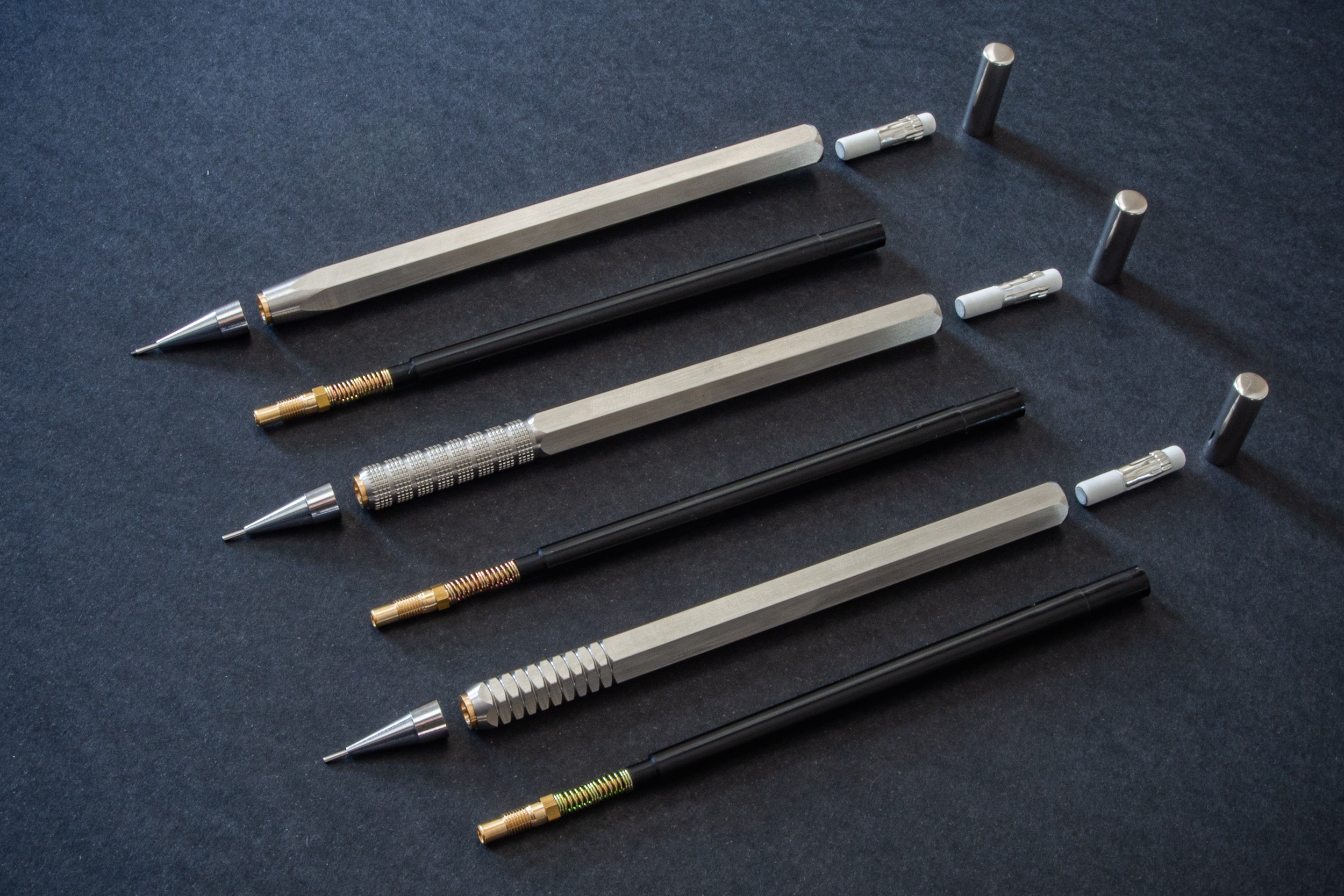
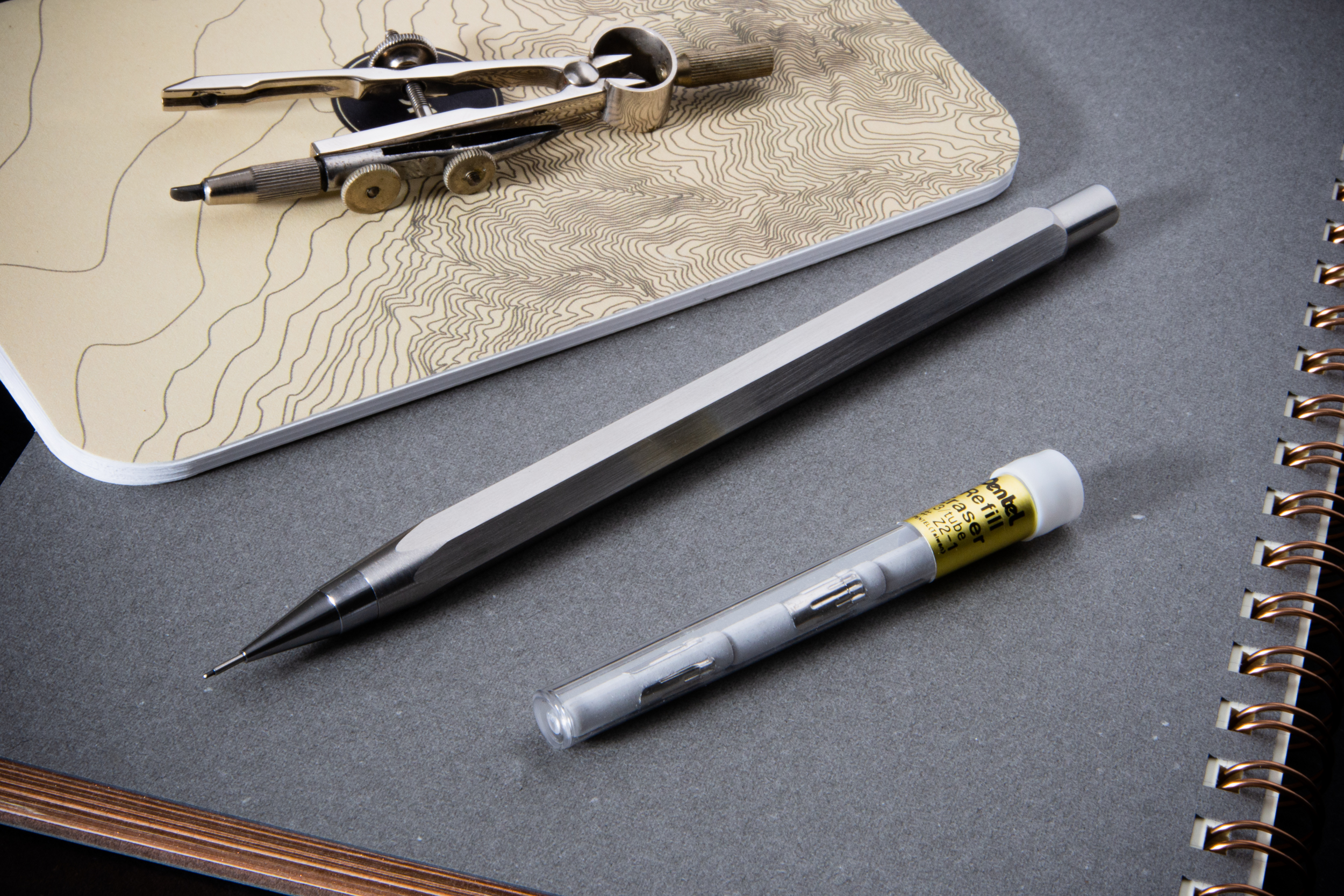

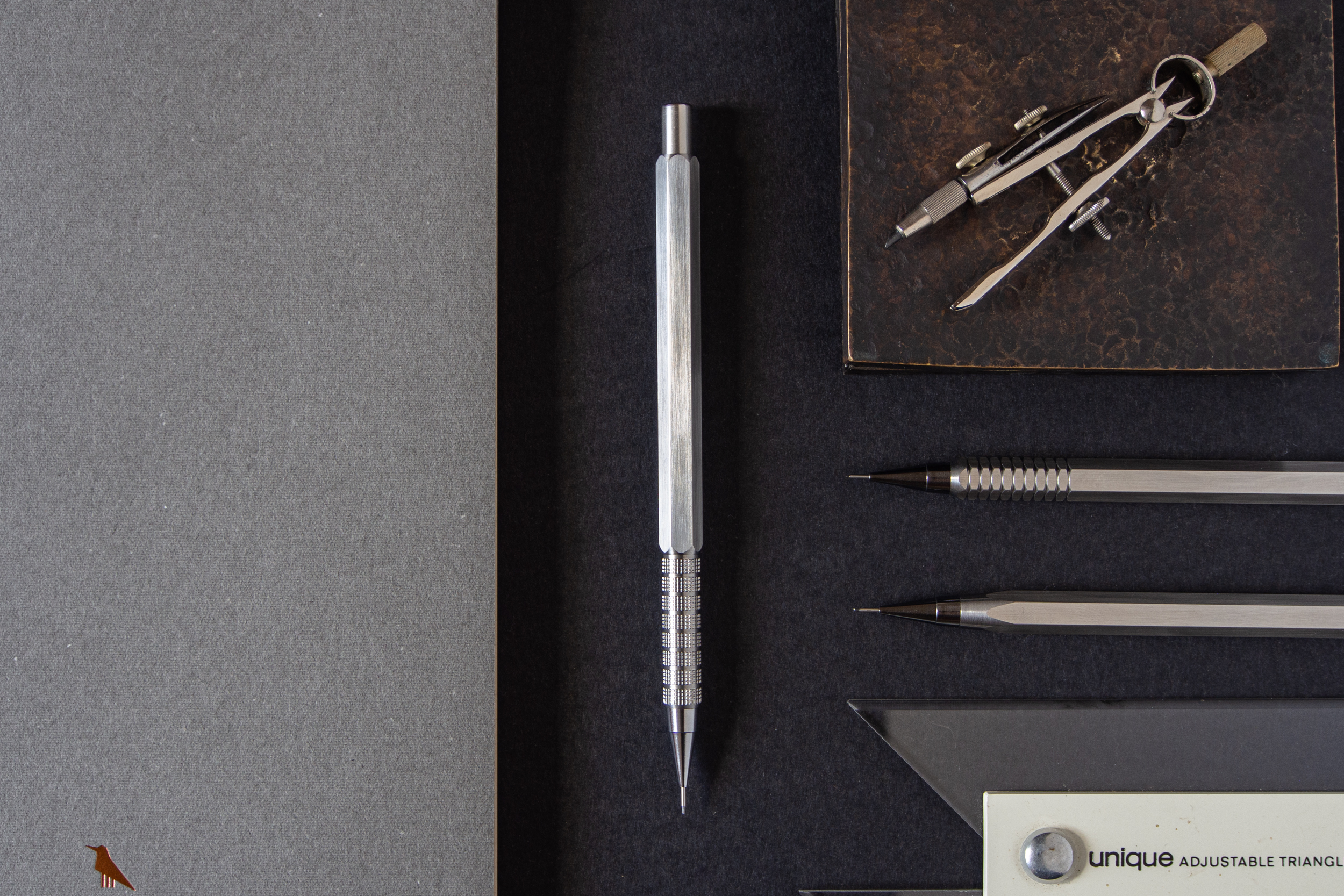

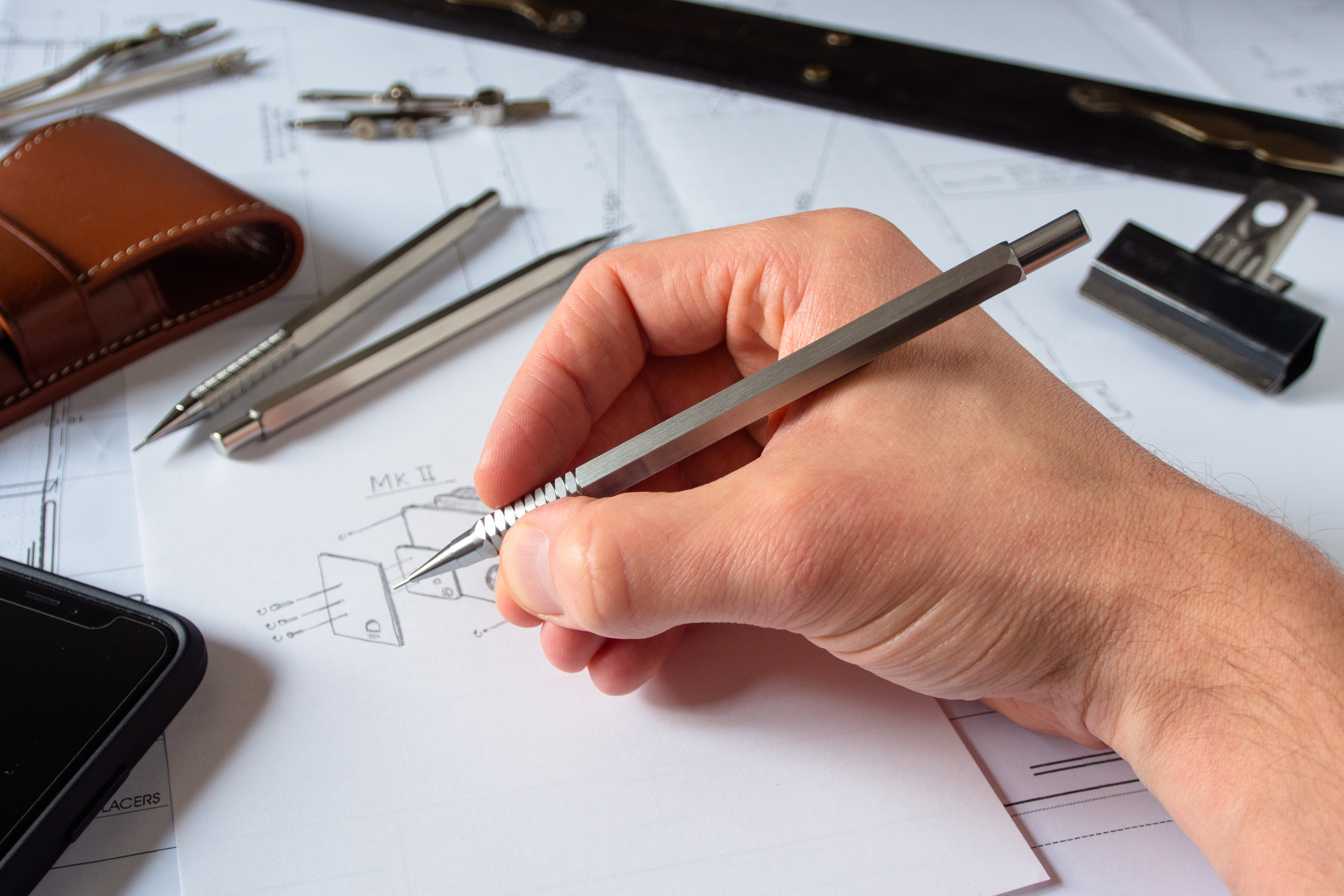





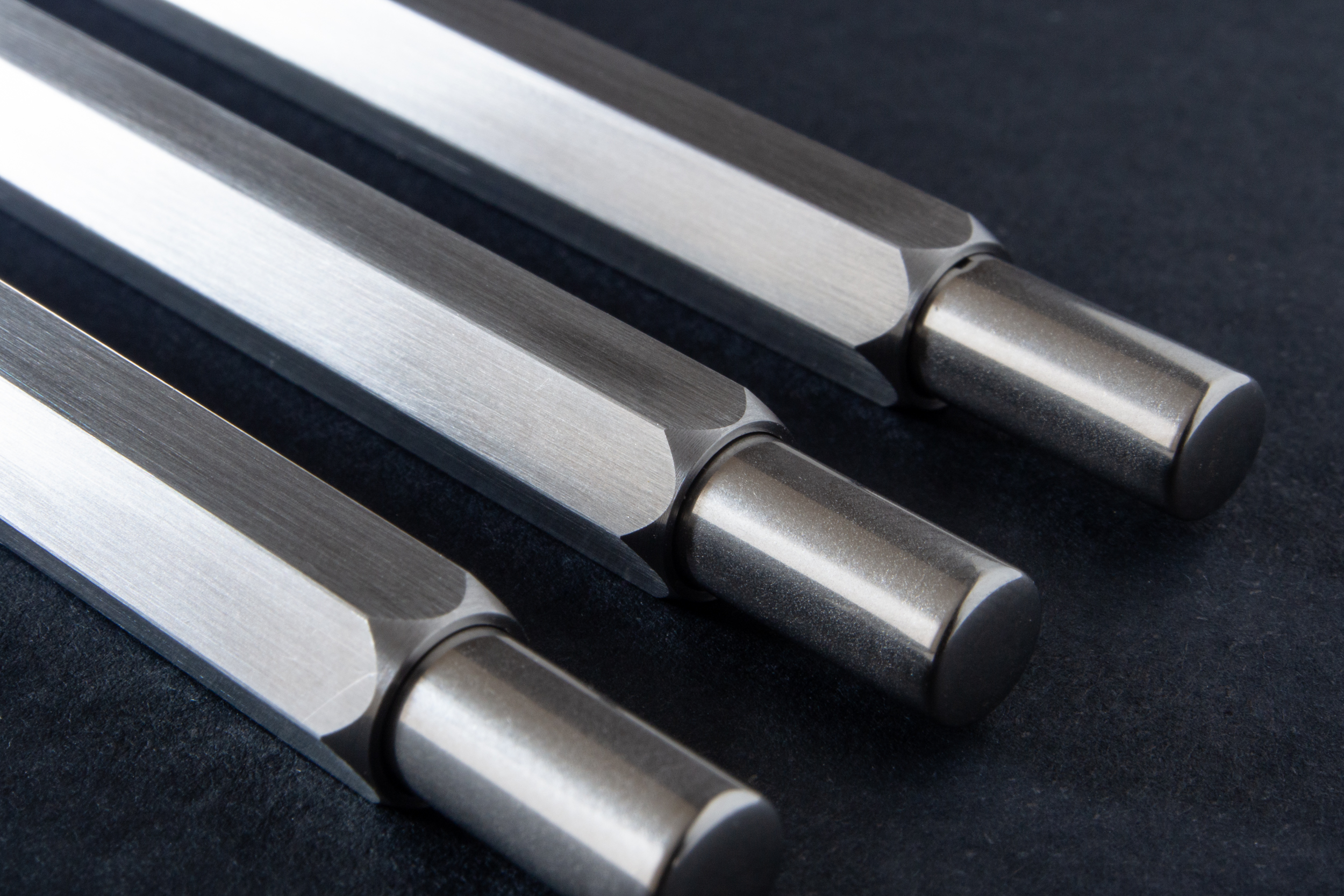




How does the brushed finish of the pencil feel? Does it have enough texture, or is it brutally smooth?
The brushed surfaces are certainly smooth! They feel a lot like the finish on brushed stainless steel watch cases, if that makes sense. If you’re looking for grip, I’d definitely opt for one of the knurled versions.
Hi,
Love your write up and photography. I was curious, what compass that is in the photos, it’s very beautiful.
The compass is by Suunto!
Sorry, not the navigation compass, what is the drafting compass?
Hi Nicholas, thank you for your kind words! The drafting compass is part of a set made by a company called ‘Temple’ British Precision. It was actually my dad’s! It’s fairly old but the two compasses (small one pictured in review) work perfectly. Thye are probably the best compasses I’ve ever used! I’m not sure they’re still made – or made in like this, but you can probably find sets like this on auction sites.
Hi Nicholas, thank you for your kind words! The drafting compass is part of a set made by a company called ‘Temple’ British Precision. It was actually my dad’s! It’s fairly old but the two compasses (small one pictured in review) work perfectly. Thye are probably the best compasses I’ve ever used! I’m not sure they’re still made – or made in like this, but you can probably find sets like this on auction sites.
Hi Nicholas, thank you for your kind words! The drafting compass is part of a set made by a company called ‘Temple’ British Precision. It was actually my dad’s! It’s fairly old but the two compasses (small one pictured in review) work perfectly. Thye are probably the best compasses I’ve ever used! I’m not sure they’re still made – or made like this, but you can probably find sets like this on auction sites.